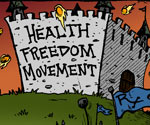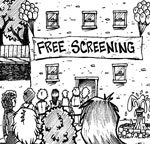Understanding the Answer to the Question What is Vitamin D?
| Share on Facebook | Share on Twitter | Share on Google+ |
What is vitamin D? A vitamin that also is a hormone, vitamin D acts not just in the bones but in nearly every system in the body.
Vitamin D and Rickets
Understanding what vitamin D is requires taking a refresher course in the history of the Industrial Revolution. For uncounted centuries through the 1700's, most people had worked in agriculture, spending much of their time outdoors. By the late 1800's, however, children as young as four years old were sent to work in factories, often noisy, dirty, damp, windowless rooms in which they were forced to perform repetitive tasks for 10, 12 and even 14 hours a day. People of all ages went to work before sunup and got home from work after sundown, and a disease called rickets was rampant.
Rickets was devastating to children. Muscles wasted away. Bones, especially in the legs, were deformed and twisted. Although children with rickets were found everywhere in the industrialized world, the disease was particularly prevalent in cities, in regions that receive little natural sunlight, especially in winter, and in the towns where the sky was black from the burning of coal. In the 1930's, however, scientists discovered a wonder cure for this childhood form of osteoporosis. That wonder cure was vitamin D.
What Does Vitamin D Do?
Adding a minute amount of vitamin D to milk, scientists found, canceled out the effects of working in the dark. One of the first functions of vitamin D scientists came to understand was the way vitamin D helps bones absorb calcium. Vitamin D in the bloodstream circulates to the liver where it is transformed into calcitriol. (This means that your liver has to be functioning properly for your body to use vitamin D.) In turn, calicitriol acts on the kidneys to keep them from excreting calcium into the urine and acts on the lining of the intestine so that more calcium is absorbed from food.
The calcitriol form of vitamin D also stimulates activity in the bones. It stimulates both the osteoblasts, that build new bone, and the osteoclasts, that break down old bone. As long as there is the right balance of calcium and phosphorous in the diet, however, enough calcium-rich foods (including dairy, fish, and green leafy vegetables) without too many phosphorous-rich foods (like meat), then there is more building up than breaking down, and vitamin D stimulates bone health. The stimulating effect of vitamin D is not limited to the bones, however.
What Does Vitamin D Do in the Rest of the Body?
Once rickets became almost completely a thing of the past, scientists stopped doing vitamin D research, until the 1990's. Then researchers discovered that vitamin D has far more importance in the body that just bone health. Here are the most important findings of contemporary vitamin D research:
- Just as vitamin D encourages bones to take in calcium, it encourages the white blood cells known as macrophages to take in microorganisms. Their name literally meaning "big eater," the macrophages surround and consume bacteria and other microscopic infection-causing organisms.
- Taking a very modest amount of supplemental vitamin D, just 1000 IU a day, drastically reduces the risk of breast and ovarian cancer in women and pancreatic and colon cancer in both men and women. One study found that taking a vitamin D supplement lowered overall cancer rates by 60%. Smokers, however, may not benefit from taking vitamin D. In fact, smokers have higher rates of cancer if they take vitamin D.
- If you have fair skin, getting more vitamin D will protect your arteries. If you have yellow, red, brown, or black skin, however, getting too much vitamin D may actually increase your risk of cardiovascular disease.
A little vitamin D supplementation is a good thing for everyone. But most vitamin D recommendations stop at 1,000 units a day for maintenance and 5,000 units a day for people who have had a blood test finding them to be deficient in vitamin D.
If you are of African, Middle Eastern, South Asian, or Hispanic descent, or if you have dark skin, however, do not take more than 5,000 units a day unless you know you have an ongoing vitamin deficiency. Don't take more than 5,000 units a day for your health unless you have a specific health concer.
Selected References:
Gorham, ED; Garland, CF; Garland, FC; Grant, WB; Mohr, SB; Lipkin, M; Newmark, HL; Giovannucci, E et al. (2007).
Optimal vitamin D status for colorectal cancer prevention: a quantitative meta analysis. American Journal of Preventive Medicine 32 (3): 210–6
Ingraham, BA; Bragdon, B; Nohe, A (2008). Molecular basis of the potential of vitamin D to prevent cancer. Current Medical Research and Opinion 24 (1): 139–49.
Pittas, AG; Chung, M; Trikalinos, T; Mitri, J; Brendel, M; Patel, K; Lichtenstein, AH; Lau, J et al. (2010). Systematic review: Vitamin D and cardiometabolic outcomes. Annals of Internal Medicine 152 (5): 307–14
-
Skin CareMen Skin Care
-
Free ResourcesFree eBooks
-
Let food be thy medicine, and let thy medicine be food.Hippocrates
-
Featured Health Supplement
 ...don't believe those companies or people who say that tablets are not as bio-available. If they are designed and manufactured correctly it is possible to deliver results which are impossible to do with either liquids or capsules.
...don't believe those companies or people who say that tablets are not as bio-available. If they are designed and manufactured correctly it is possible to deliver results which are impossible to do with either liquids or capsules.
-



















